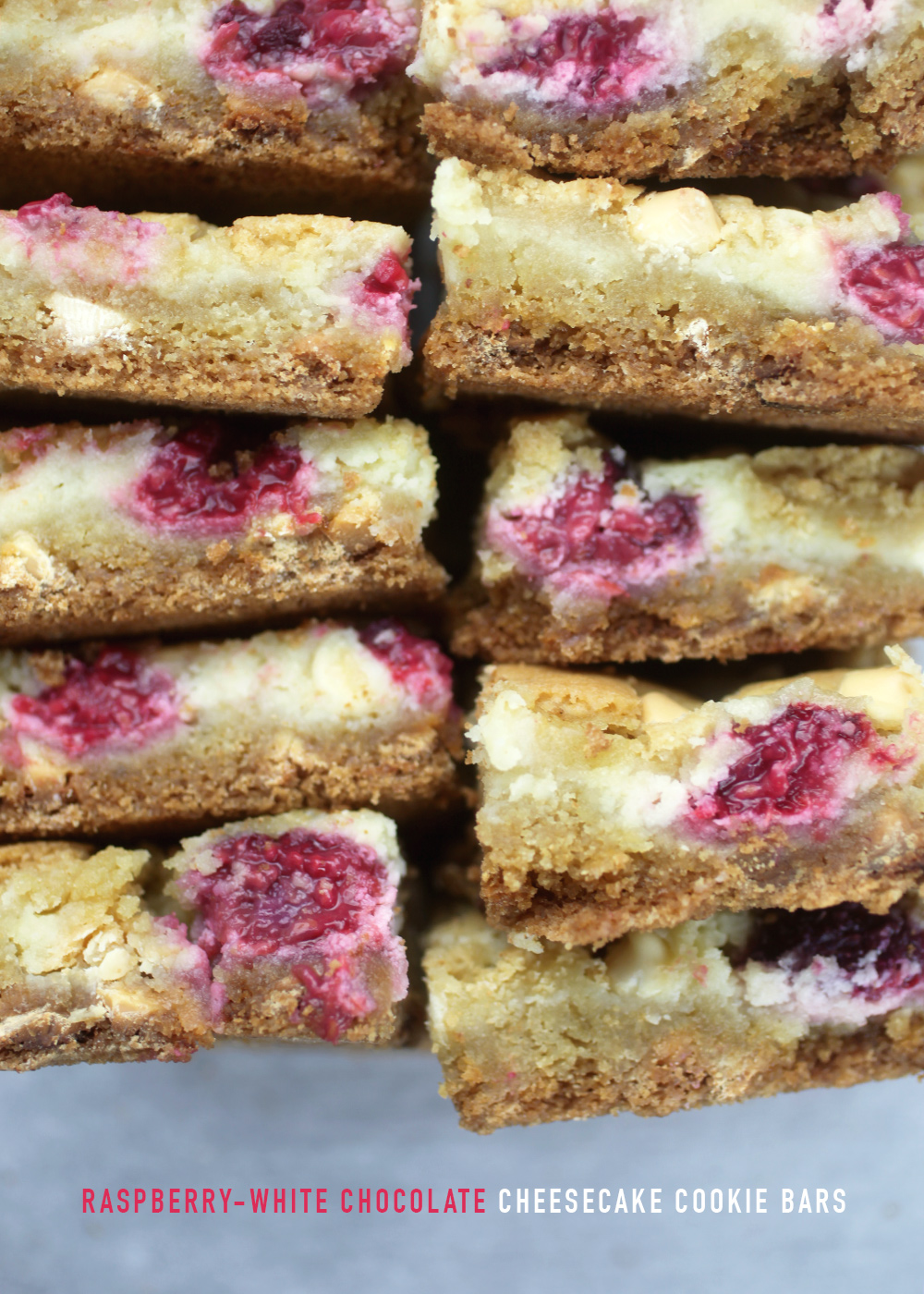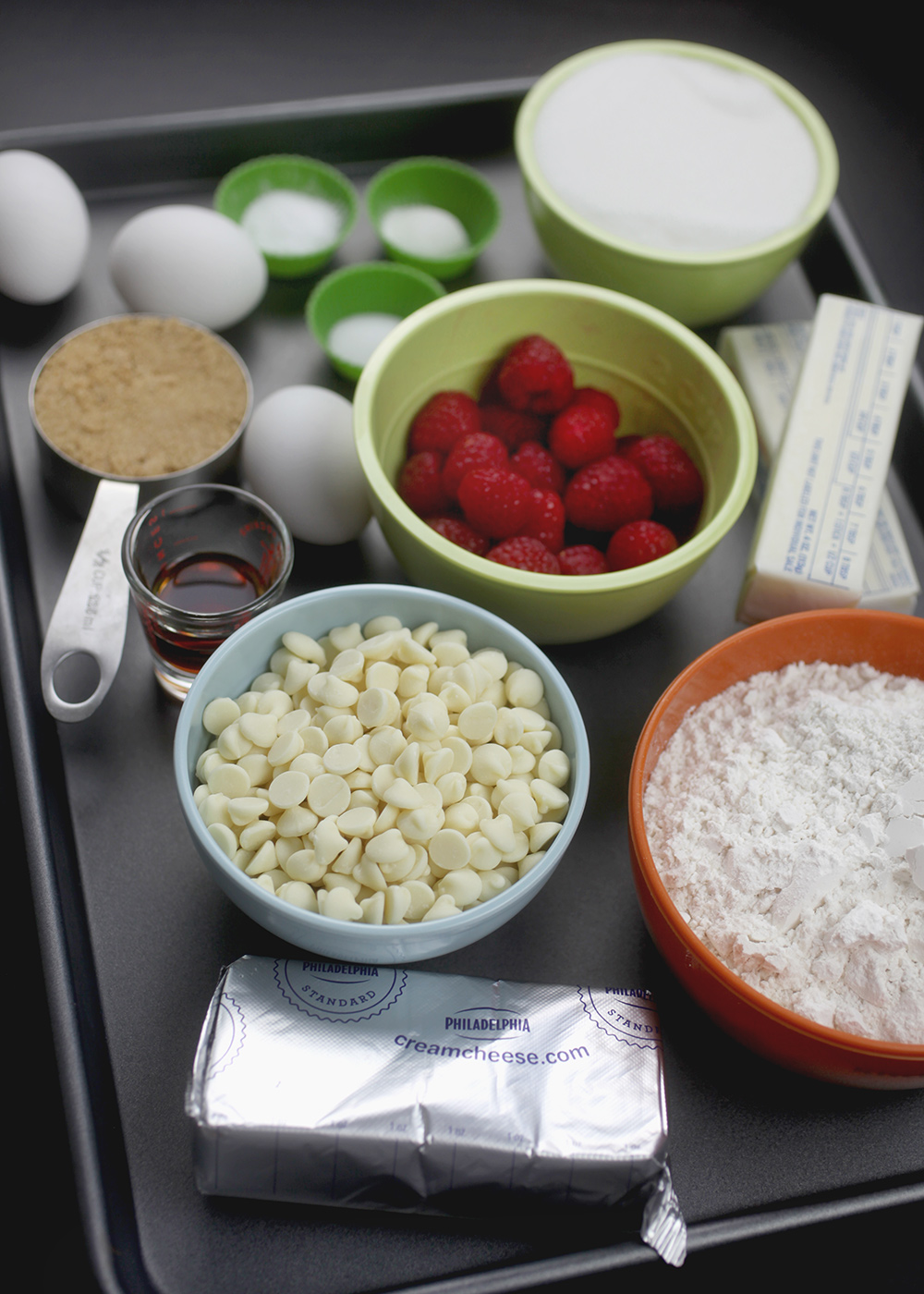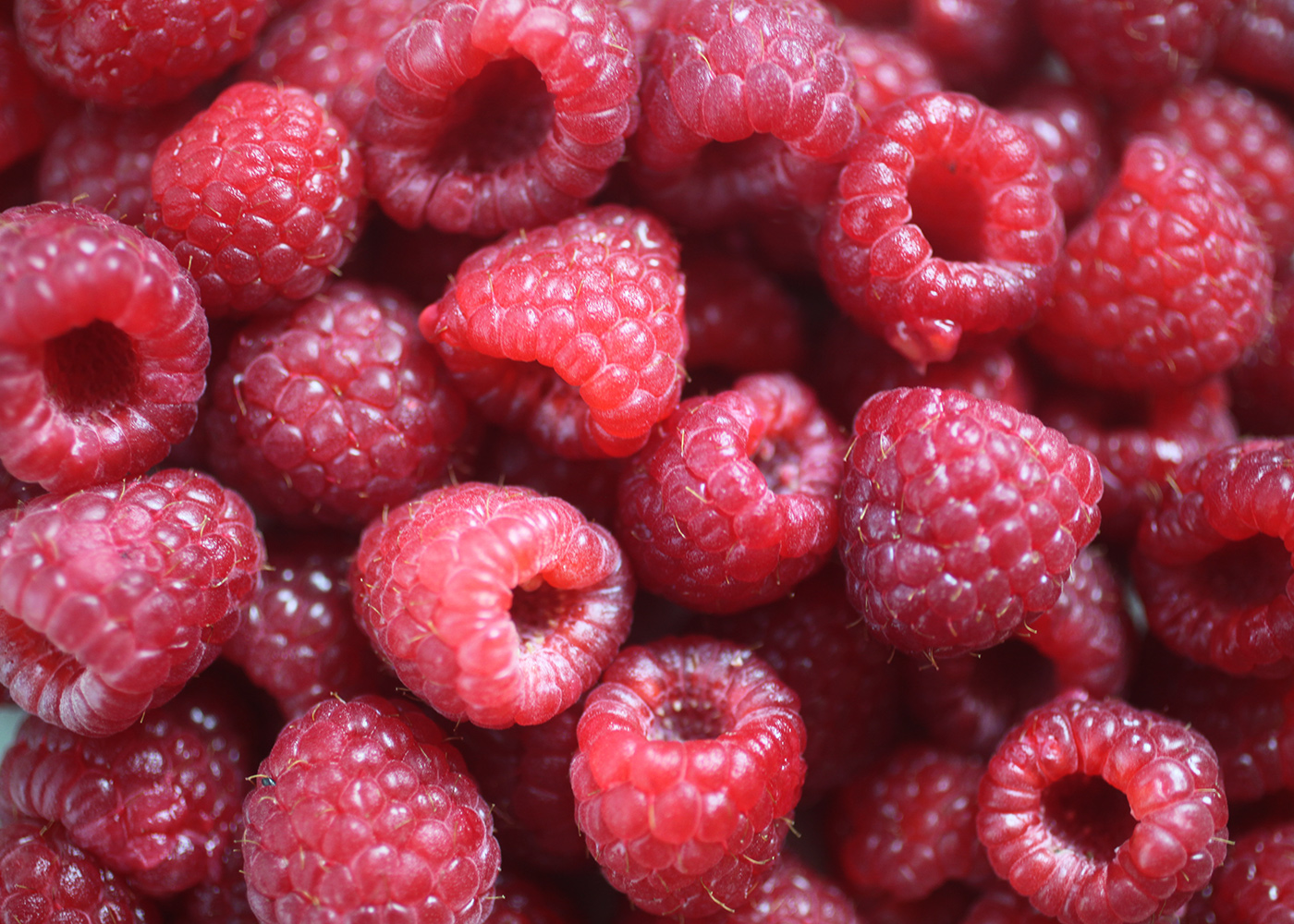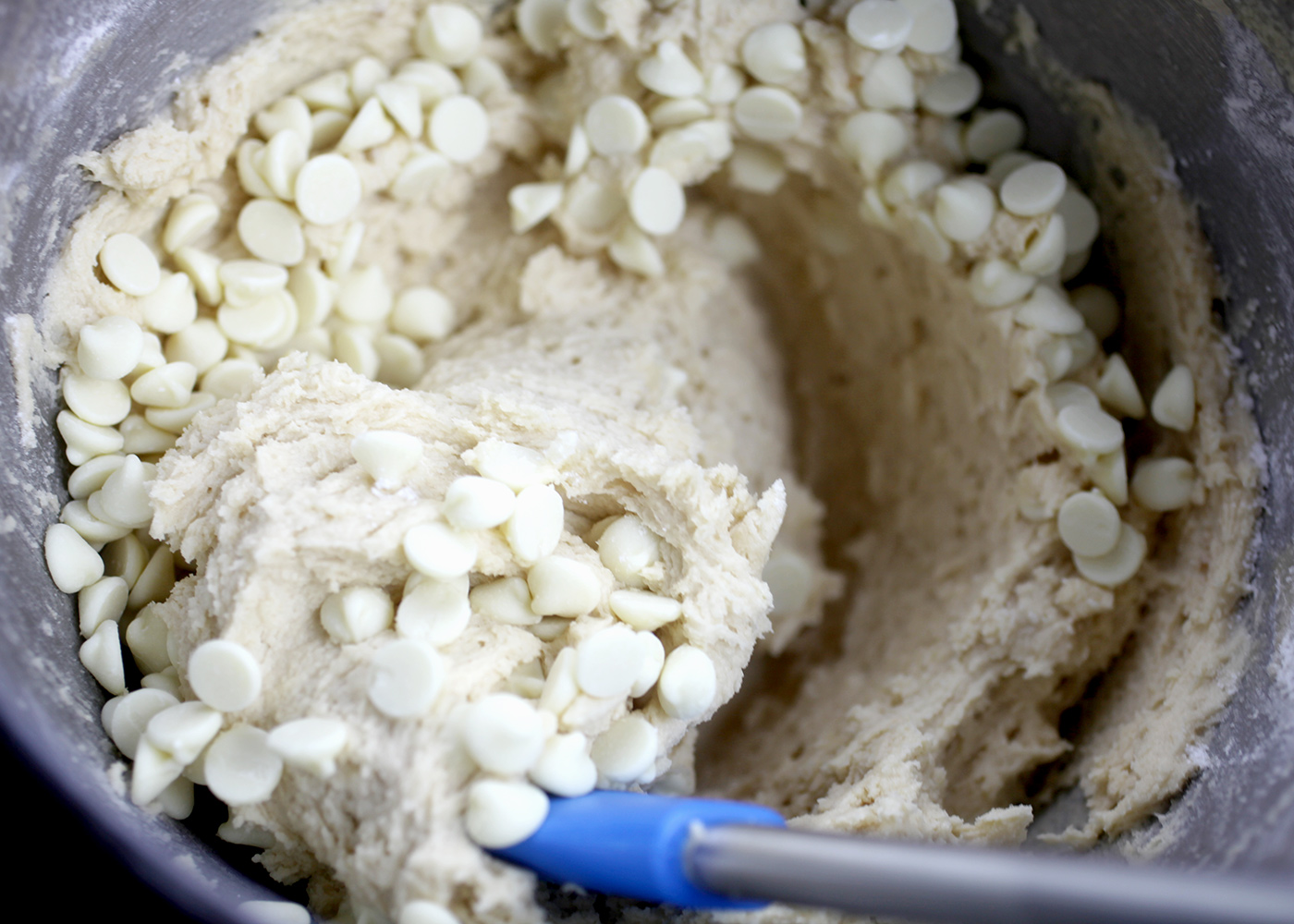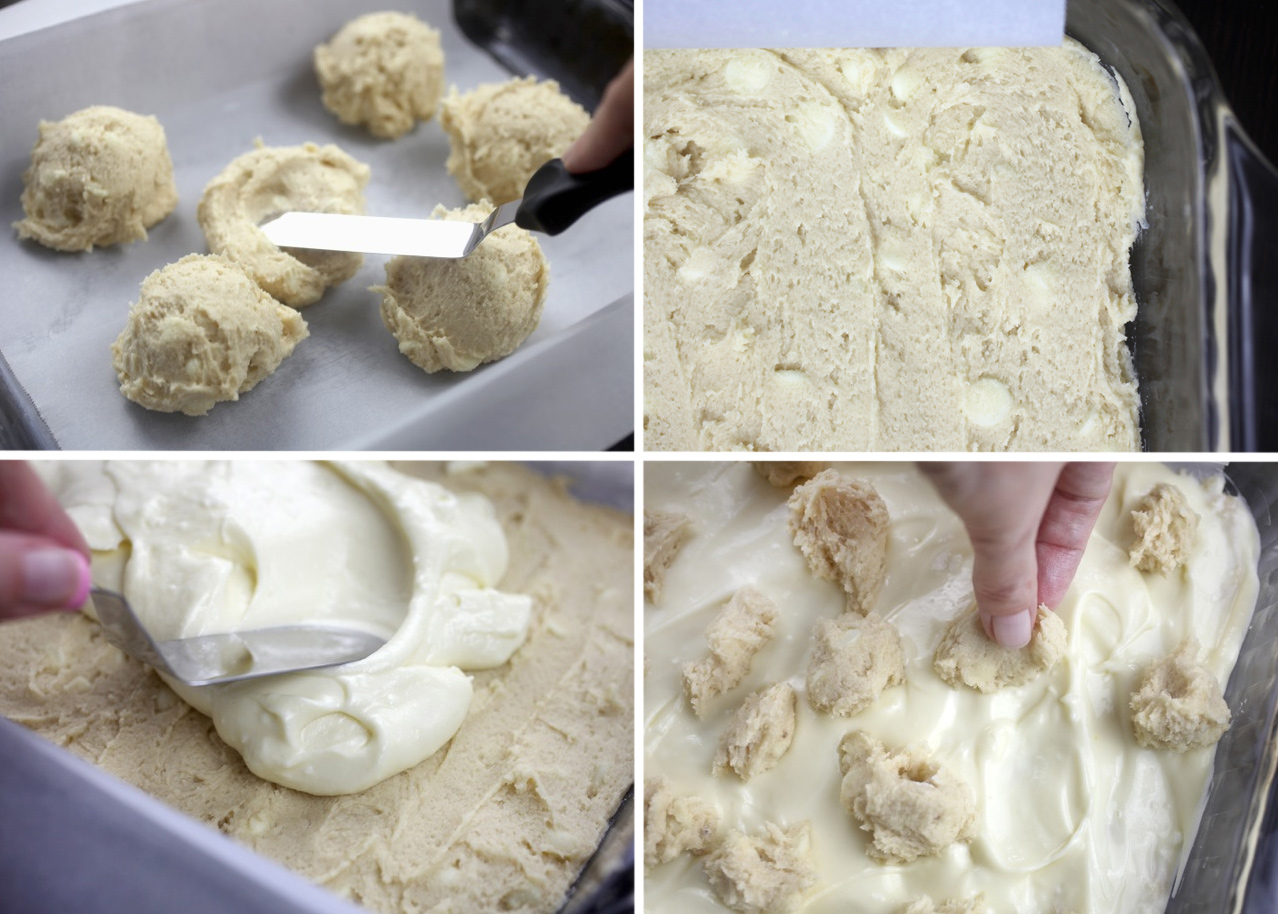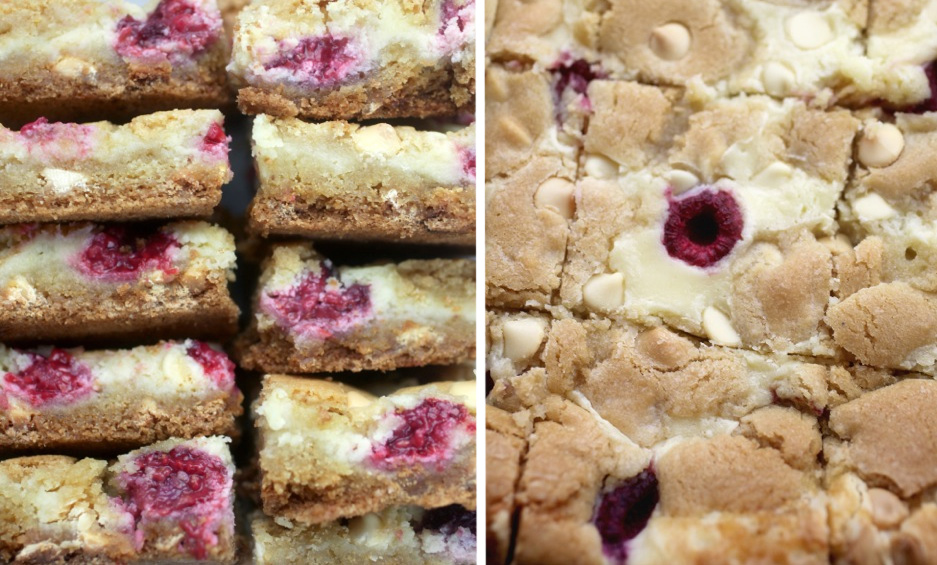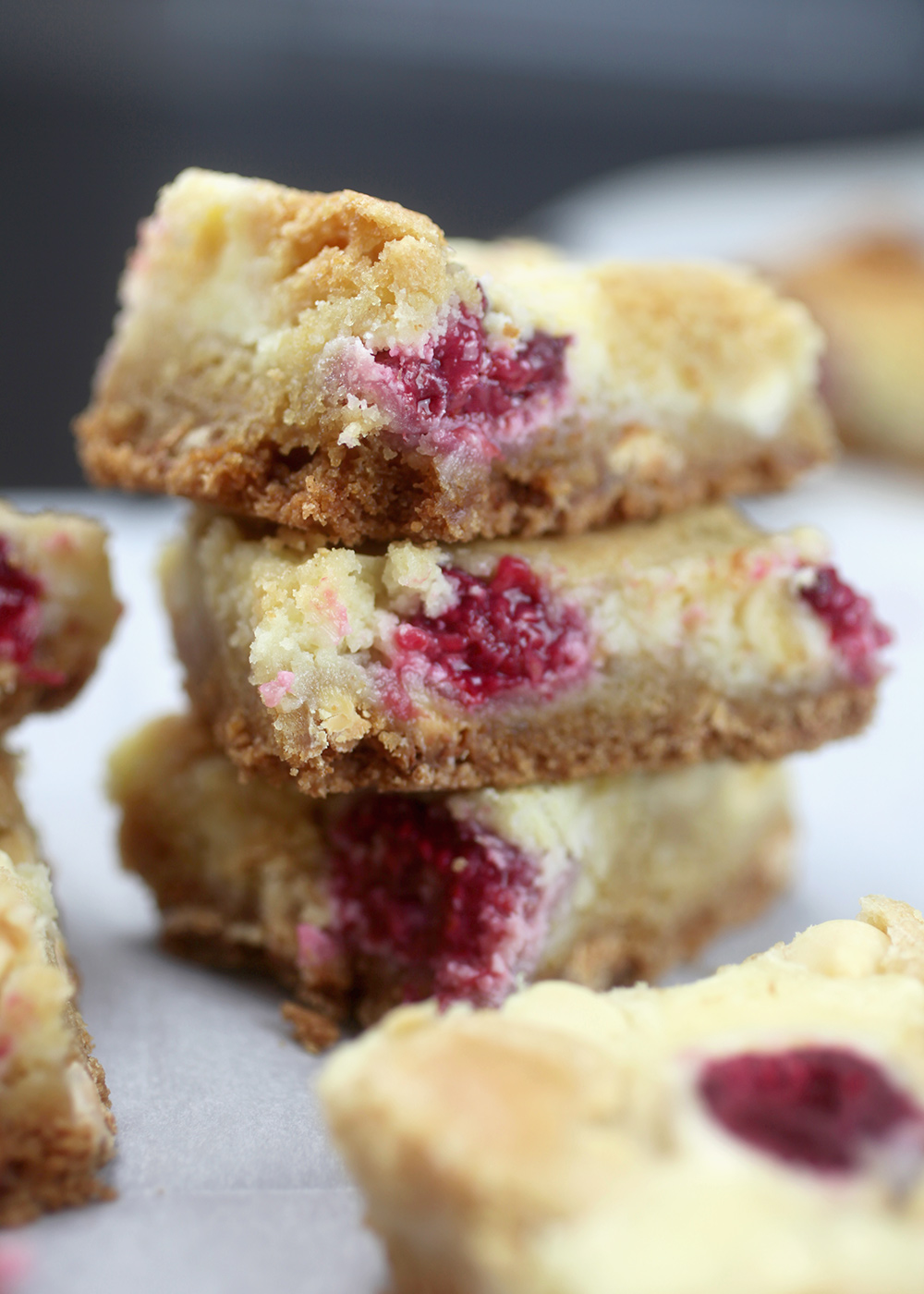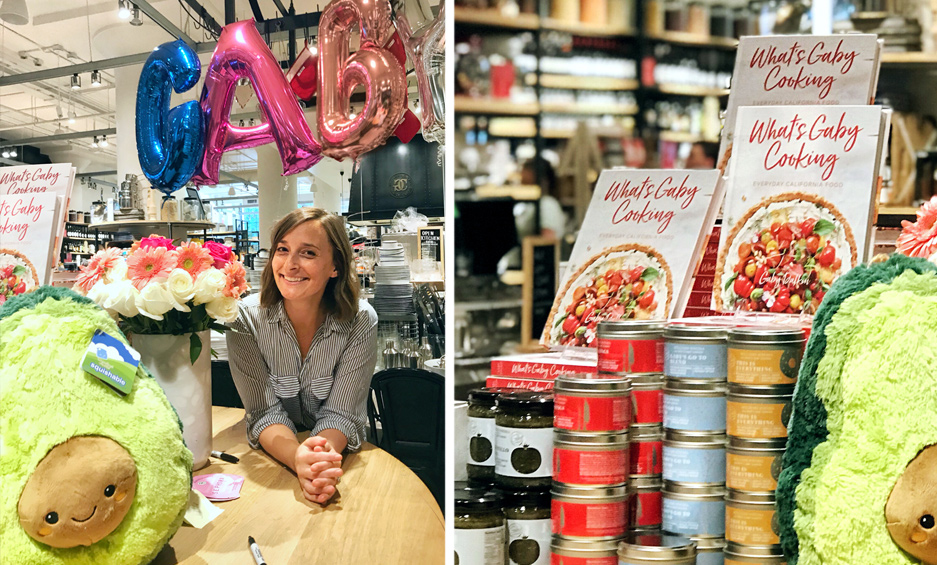Friday, June 29, 2018
Thursday, June 28, 2018
10 Powerful Natural Antibiotics Hiding In Your Kitchen
from Dai Manuel: Your Lifestyle Mentor https://ift.tt/2KxpOTx
Understanding Ethics Through Game Design and Educational Goals
Adapted from Game-Based Learning in Action: How an Expert Affinity Group Teaches with Games by Matthew Farber published by Peter Lang.
Professor Karen Schrier, Founding Director of the Games & Emerging Media program at Maris College, developed the Ethics, Practice, and Implementation Categorization (EPIC) Framework in 2015 for the use of use video games in ethics education, proposing seven educational goals, and 12 strategies for ethics games. For example, the video game Journey can help students to convey emotion and perspective, while iCivics’ Argument Wars teaches the deliberation of real world issues.
Games offer more to players than goals of winning. The experiences along the way may often present ethical challenges to players. The idea of the EPIC Framework is to be a tool for teachers to refer to when considering which games to use in classrooms. The goals and strategies were drawn from a literature review of vetted frameworks. Schrier told me:
I thought about the different types of goals a teacher might have in trying to teach ethics. Goals might be building ethical awareness, enhancing character, or helping students practice reflection. I also looked at 12 different strategies that might be used in ethics education, things like role-play or modeling of behavior, simulating scenarios or issues. I used it to help teachers understand the appropriate game to meet their own goals and strategies.
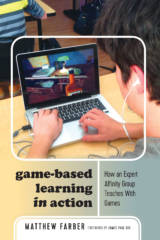 Educational goals also include enhancing emotional intelligence, practicing self-care, and cultivating facility with major ethics issues, approaches, and frameworks. The 12 strategies game designers use to deepen a player’s understanding of ethics are:
Educational goals also include enhancing emotional intelligence, practicing self-care, and cultivating facility with major ethics issues, approaches, and frameworks. The 12 strategies game designers use to deepen a player’s understanding of ethics are:
- Emotion, mood, and tone
- Diaries or personal reflection devices
- Role-taking and role-playing
- Story or narrative
- Modeling through avatar or character
- Choices and consequences
- Simulation
- Social interaction and collaboration
- Deliberation, dialogue, and discourse
- Applications to real-world issues
- Procedural exploration and interaction
- ‘Nudges’ or contextual and/or personalized clues
When considering a game to teach ethics, Schrier said one must consider what might be the best match for the teacher’s classroom. “The context and goals of the classroom need to be at the forefront,” said Schrier. You can’t just drop in [the US History game series] Mission US, or [the immigration game] The Migrant Trail without thinking through the kinds of strategies and goals you want to meet.” Educators must also play the game in advance and “think about the maturity of the students and the goals they have,” Schrier told me in 2016.
Members of The Tribe, an affinity group of game-based learning teachers, use games as a safe space for students to experiment with identity. Using Gone Home, Paul Darvasi (who also reports on game-based learning for MindShift) and Alexander Husøy’s students became the character Katie Greenbriar in a role-playing game as they explored an empty house filled with family secrets. Then they engaged students in discussions about a game’s mood and tone Through World of Warcraft, Peggy Sheehy asked her students about their hero’s journey through adolescence. Glen Irvin had his students learn Spanish by role-playing as businesspersons in Minecraft game and then reflected on the acquired learned vocabulary on his Schoology page.
These way these games are used in the classroom are among Schrier’s list of strategies, as was the use of open-ended assessments for student reflections. The way students interact with games is different. “Everybody is different,” said Schrier. “We [as designers] might go in thinking we’re making this great educational game. But games, like people, are complex. Not everyone will respond to every game the same way.”
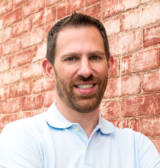 Matthew Farber, Ed.D. is an assistant professor of Technology, Innovation, and Pedagogy at the University of Northern Colorado. With Karen Schrier, he co-authored the UNESCO MGIEP working paper, The Limits and Strengths of Using Digital Games as “Empathy Machines.” He is also the author of Gamify Your Classroom: A Field Guide to Game-Based Learning — Revised Edition, and Game-Based Learning in Action: How an Expert Affinity Group Teaches with Games.
Matthew Farber, Ed.D. is an assistant professor of Technology, Innovation, and Pedagogy at the University of Northern Colorado. With Karen Schrier, he co-authored the UNESCO MGIEP working paper, The Limits and Strengths of Using Digital Games as “Empathy Machines.” He is also the author of Gamify Your Classroom: A Field Guide to Game-Based Learning — Revised Edition, and Game-Based Learning in Action: How an Expert Affinity Group Teaches with Games.
from MindShift https://ift.tt/2IA0tTZ
Everything You Need to Know About Antioxidants
from Dai Manuel: Your Lifestyle Mentor https://ift.tt/2NcfO0y
13 Benefits of CBD Oil (and no, it won’t get you high)
from Dai Manuel: Your Lifestyle Mentor https://ift.tt/2Iv7dm1
Wednesday, June 27, 2018
The Benefits of Cultivating Curiosity in Kids
Jamie Jirout was not the sort of student who simply took a textbook at its word. In her first semester of college, she asked her psychology professor if she could assist in the professor’s research. Jirout’s interest wasn’t fueled by the fact that she found the coursework convincing — quite the opposite.
“I’d read something in the textbook and then I’d think, that doesn’t really make sense with what I’ve seen, how do they know that?” she recalls. She wanted to reconcile that gap and so, threw herself into research.
Her quest for answers has propelled her career to the present day. Jirout is now an assistant professor of education at the University of Virginia, where one of her primary research interests is studying curiosity in the classroom.
That research is sorely needed. Despite the centrality of curiosity to all scientific endeavors, there’s a relative dearth of studies on the subject itself. Fortunately, scientists such as Jirout and others are actively unraveling this concept and, in the process, making a convincing case that we can and should teach young minds to embrace their inquisitive nature.
Far from driving the demise of cats, curiosity comes with many benefits. Studies suggest it’s linked to joy on the job, social skills and even a happy disposition. And in an academic context, greater curiosity generally predicts greater success.
In April, for example, Prachi Shah, an associate professor of pediatrics at the University of Michigan, published findings from a study of 6,200 children and found that elevated curiosity was linked to higher math and literacy skills among kindergarteners. That effect remained strong even when researchers compared kids with similar levels of “effortful control,” or the ability to concentrate and pay attention. Even more surprising, she discovered that students from impoverished backgrounds with a strong thirst for knowledge performed as well as those from affluent homes.
“At high levels [of curiosity], the achievement gap associated with poverty was essentially closed,” Shah says. That finding hints that promoting inquisitive thinking could reduce differences in school performance related to socioeconomic disadvantage. In future work, Shah hopes to identify parenting styles that help explain why some students are so driven to learn, which might lead to interventions benefiting economically disadvantaged children.
Meanwhile, neuroscience is starting to explain curiosity’s power. When we’re hungry for answers, our brain activity changes in ways that help us retain new information. For one, the curious mind engages processes and brain regions associated with anticipating a reward. We want to learn more because the answers are satisfying. In addition, the hippocampus, a memory hub, ramps up activity, preparing to store information. The more we want to know an answer, research suggests, the more memorable it becomes.
“It’s also probably tied to depth of processing,” says Mary Helen Immordino-Yang, a professor of education, psychology and neuroscience at the University of Southern California. In ongoing research, she has found that curiosity can predict not only how much teens will remember about a story they’ve read, but also how thoughtfully they reflect on the story’s characters. “They can take multiple perspectives, try to integrate and reconcile them, [and] they appreciate the feelings people have that drive their actions,” she says.
But unraveling the factors that shape a curious mind has long been a daunting prospect. “It’s so difficult to study,” says Shah of the University of Michigan. Not only is the concept difficult to measure, she explains, but also “there isn’t a well-defined or recognized definition of what curiosity is.”
Rather than being clear-cut, curiosity overlaps with other psychological constructs such as intrinsic motivation and an open personality. And there’s evidence for both the idea that curiosity is a trait (not unlike extroversion or neuroticism) that’s pretty stable within each person and that it is a state (akin to happiness or hunger) that can wax and wane based on context.
“Curiosity is automatic, it’s in our DNA … We’re born curious about so many things,” says psychologist, author and researcher Scott Barry Kaufman. But we’re not equally curious about everything, he says. Instead we each have special interests and natural proclivities.
When we talk about curiosity in an academic context, Kaufman points out, we are describing a desire to acquire very specific kinds of knowledge. “You don’t need to be more curious about eating pizza,” he says.
Indeed, an as yet unpublished study of 92 kids from grades 1 through 6 found that all of the students exhibited some level of curiosity. But for the most part their curiosity was directed towards social and extracurricular interests — not schoolwork. The challenge for teachers is finding a way to encourage interest in what’s happening in class.
One way to do that, Kaufman argues, is allowing kids to follow their interests. Immordino-Yang, for example, has found that when classwork connects to topics that students care about, they engage more deeply. She points to a New York City school where teachers connected chemistry coursework to discussions of lead in the water in Detroit. “The science and societal implications inform and drive one another so kids can connect to the bigger purpose of these academic skills,” she says.
Another option is for teachers to model curious behavior. Curiosity, as it turns out, is contagious. In 2015, for example, a team at the Massachusetts Institute of Technology found that a robot that expressed enthusiasm for learning and actively speculated about a story’s outcome during a reading activity with a child could inspire that youngster’s desire for knowledge.
For her part, Jirout suspects that a teacher’s language can encourage kids to think like creative detectives about their schoolwork. “It really can be subtle differences,” she says. “Not just answering a student’s question but acknowledging ‘thank you for asking that question.’”
She also believes teachers can be models of how to be comfortable with uncertainty. That idea stems from the fact that, in her work, Jirout defines and measures curiosity in terms of how people respond to gaps in their knowledge. Teachers can demonstrate through their own mistakes or uncertainty that admitting to not knowing something opens up an opportunity for learning.
They can also adjust the levels of freedom and handholding they give students. With curiosity, you need just enough information to be intrigued — too little can make a situation bewildering and too much robs you of the opportunity to explore a topic and learn for yourself. Curiosity, then, like so many things, is all about balance.
This story about curiosity was produced by The Hechinger Report, a nonprofit, independent news organization focused on inequality and innovation in education. Sign up for Hechinger’s newsletter.
from MindShift https://ift.tt/2Kb15F7
Raspberry White Chocolate Cheesecake Cookie Bars
These Cheesecake Cookie Bars dotted with white chocolate chips and sprinkled with raspberries are a perfect sweet treat to kick off summer. The recipe is from What’s Gaby Cooking’s brand new cookbook. I met Gaby a few years ago and she is just the cutest. And a force when it comes to food. She was in town a couple of weeks ago for her book signing so I stopped in to give her a hug and say hi. And of course, I had to bake something from her beautiful book, which was also photographed by my chocolate loving friend, Matt Armendariz. These besties are a dynamic duo so check them out.
The recipe calls for easy ingredients. Always a win. Eggs, butter, vanilla, sugar, brown sugar, flour, baking soda, baking powder and salt. And let’s not forget the stars. Cream Cheese, white chocolate chips and fresh raspberries.
Pretty!
Once you mix up the cookie dough, stir in most of the white chocolate chips.
Spread a little more than half of the cookie dough in the bottom of a 9 X 13 inch baking pan. Spread the cheesecake layer on top after that. Then crumble the remaining cookie dough on the very top.
Sprinkle more white chocolate chips and raspberries on the top and bake away!
Remove from the oven to cool and then chill in the fridge before cutting into bars.
OMGoodness! look at those beauties. And so so good, too!
Raspberry-White Chocolate Cheesecake Cookie Bars
Ingredients:
- Cookie Layer:
- 1 cup unsalted butter, room temperature
- 1/2 cup brown sugar
- 1-1/2 cups granulated sugar
- 2 large eggs
- 2-1/2 teaspoons vanilla extract
- 2-1/2 cups all purpose flour
- 1 teaspoon kosher salt
- 1 teaspoon baking soda
- 1 teaspoon baking powder
- 1-1/4 cups white chocolate chips
- 1 cup fresh raspberries
- Cheesecake Layer:
- 8 ounces cream cheese, room temperature
- 1/2 cup granulated sugar
- 1 large egg
- 1 teaspoon vanilla extract
Directions:
- Preheat oven to 350 degrees F and line a baking pan with parchment paper with a little hanging over the sides.
- Make the cookie layer: In a stand mixer, cream together butter, brown sugar and granulated sugar for three minutes, until smooth. Add eggs and vanilla and continue to mix, scraping down the sides of the bowl. Add the flour, salt, baking soda, and baking powder and mix on low speed until ingredients are incorporated. Fold in 1 cup of the white chocolate chips.
- Make the cheesecake layer: In a food processor, combine cream cheese, granulated sugar, egg and vanilla and mix for two minutes, scraping down the sides as needed until ingredients are evenly combined and mixture is smooth.
- Assemble: Press slightly more than half of the cookie dough mixture into the bottom of the pan to make an even layer. Spread the cheesecake mixture on top of the cookie dough. Crumble the remaining cookie dough on top of the cheesecake mixture. Sprinkle remaining white chocolate chips and raspberries on top.
- Bake for 40-45 minutes, until the cookie dough is golden brown. Remove from oven and cool for 30 minutes. Transfer to the refrigerator for at least two hours or overnight. Cut into bars and serve.
Enjoy and check out Gaby’s book, Everyday California Food … it’s full of deliciously simple and fresh recipes you’ll love. And she also has a line of salsas and seasonings at Williams-Sonoma, too.
from bakerella.com https://ift.tt/2tNVrhp
Tuesday, June 26, 2018
Making Schools Safer: Harsh Consequences, Or Second Chances?
“For the last 14 years I had been a stay at home mom and a soccer mom of three kids,” says Lori Alhadeff. “On Valentine’s Day my daughter was brutally shot down and murdered and I became a school safety activist.”
That day at Marjory Stoneman Douglas High School, when a 19-year-old former student killed Alyssa Alhadeff and 16 other people, changed many lives.
And it pushed the question of school safety once again to the front and center.
The school discipline policies in Broward County, Fla., designed to be more equitable and more effective than what they replaced, have become exhibit A in what’s already a national debate.
The debate in many ways comes down to this: What’s more important — cold steel or warm hugs? Harsh consequences or second chances? Do we achieve safety and security by making schools harder — or making them softer?
To understand the debate that’s raging now, between the “hards” and the “softs,” you have to go back first to March 31, 1994. That’s when President Bill Clinton signed the Gun-Free Schools Act.
The law mandated that if a student brought a firearm to school, law enforcement would be notified. Lesser offenses like bringing “dangerous drugs” or other weapons to school triggered automatic and severe punishments.
The next two decades were the era of the hards: “zero tolerance” policies. Police officers became more common in schools. As did physical security measures, like metal detectors. As did arrests. Especially for black and brown students.
Arrested for spitballs
In Broward County, in the 2011-2012 school year, the state Department of Juvenile Justice reported 1,062 school-related arrests, the highest number in the state. Seventy-one percent of these arrests were for misdemeanors. The media reported arrests of students for throwing a spitball or a lollipop.
“There was outrage,” says Desmond Blackburn, a longtime educator in Broward. He began his career as a math teacher in the early 1990s, and rose to become chief of schools under Broward Superintendent Robert Runcie. “Broward was highlighted in that report as a critical problem — the worst district in the state.”
At Runcie’s direction, the district partnered with law enforcement, the local NAACP and other organizations to create a new approach to discipline and behavior. This included a diversion program for students caught for certain misdemeanor offenses, like drugs, vandalism or fighting. Rather than be referred to law enforcement or the juvenile justice system, they were supposed to get targeted counseling, such as drug rehab, or if necessary sent to an alternative school.
The diversion program had one of those awkward public-policy acronyms: Preventing Recidivism through Opportunities, Mentoring, Interventions, Supports & Education — PROMISE.
The agreement on school discipline was signed in 2013, and right away, student arrests dropped. So did recidivism, reportedly. PROMISE made headlines as a national model for ending the school to prison pipeline.
Students who messed up could get a second chance.
“My freshman year, I was hanging out with the wrong group of kids,” says BriAnne, who’s now 17. We’re using only her middle name to protect her privacy.
As a freshman, BriAnne got caught using drugs. “There was peer pressure involved. You know, you do things you don’t really mean and simple mistakes.”
She spent 10 days in the PROMISE program and she got some extra help. BriAnne just graduated from high school and she’s now headed to a local college with hopes of studying medicine.
“What stood out to us about the PROMISE program was that it really was this community-wide response,” says Becca Bracy Knight, executive director of the Broad Center, which focuses on improving education in urban schools. “We definitely had a lot of people interested in learning from what was happening in Broward.”
That interest intensified when, in 2014, the U.S. Department of Education issued guidance saying, in no uncertain terms: School discipline is a civil rights issue. If you are suspending, expelling and arresting disproportionately more children of color you will be investigated and quite possibly censured.
From zero tolerance to expanded tolerance
The era of the softs began. Instead of zero tolerance, more than 50 of America’s largest school districts instituted what might be called expanded tolerance — discipline reform. More than half the states revised their laws with the intention of reducing suspensions and expulsions, which were redefined as “exclusionary discipline” that, data shows, are associated with higher dropout rates.
“Restorative justice” came in vogue. Students who fought or who cursed out a teacher might be asked to “circle up” and work their problems out with words. Students who had outbursts in class might be given special accommodations, “time in” in a quiet corner or a trip to the social worker’s office. “Positive behavior intervention” meant students sometimes got incentives for not acting up.
These new policies were adopted with varying degrees of buy-in, professional development, resources and success.
In the worst-case scenarios, what you had were unfunded mandates for school leaders to improve certain statistics. “If you say ‘stop suspending students or you’re in big trouble,’ that’s not enough,” says Knight at the Broad Center. “You have to provide a suite of services and supports and make sure you’re measuring the right things.”
She says Broward was doing all of that, but that some districts might not have been. She likens the issue to other areas in education reform, such as the pressure to improve graduation rates, which can lead to real improvement, or to juking the stats.
A culture of leniency?
Critics of the soft approach, like Jonathan Butcher, a senior policy analyst at the Heritage Foundation, go further.
He says schools have fallen prey to a “culture of tolerance and leniency that allows students like Nikolas Cruz to fly under the radar in a way that puts kids at risk.”
Cruz was the shooter at Marjory Stoneman Douglas. He didn’t exactly fly under the radar while at school; he was suspended multiple times for a range of offenses and eventually expelled.
However, no one was happy when WLRN reported that Cruz was referred to the PROMISE program after an act of vandalism in middle school.
Superintendent Runcie had previously said that Cruz was not a part of the program.
Apparently Cruz never participated in services and no one has said why. This led to questions about the program’s recordkeeping, and its reported low recidivism rate.
And Butcher’s criticisms of lax discipline have been echoed by many parents in the district.
Andrew Pollack, who lost his daughter, Meadow, in the shooting, has met with President Trump to push for stronger security measures. On a local radio show, he called PROMISE a “cancer.” “The leniency policy, the political correctness — that’s a cancer that led up to February 14th of non-reporting of criminals that go to the schools in Broward.”
Butcher at the Heritage Foundation points out that, had Cruz been arrested at some point during his school career, Florida law might have prevented him from buying a gun.
“Clearly there’s a troubling tension between keeping a school community safe and limiting interaction within the juvenile justice system,” he says. “Where does that leave discipline when safety is in play?”
Grieving parents like Pollack and Lori Alhadeff are looking for change. Alhadeff is running for the school board, and has founded a nonprofit called Make Our Schools Safe.
“I think if people make mistakes, we should give them a second chance,” she says. “However, we’ve gone to extremes. We’ve gone from overdisciplining to underdisciplining.”
All this is taking place as Education Secretary Betsy DeVos has been backing away from enforcing that Obama-era federal guidance about disparate discipline. She’s met with critics of the guidance. Her department has narrowed its civil rights investigations.
DeVos is heading up a federal school safety commission that, she has said, won’t look at gun control; but it is charged with “hardening our schools.”
So the pendulum looks poised to swing back from “softs” to “hards.”
In Broward County, Superintendent Runcie has said, “Everything’s on the table. We’re going to be looking at our whole entire discipline system.”
Civil rights advocates like Dwanna Nicole are worried. She’s director of policy and stakeholder outreach at the Advancement Project, which helped consult on the creation of the PROMISE program.
She notes that despite nearly a decade of reforms, racial disparities in discipline haven’t gone away.
“We’ve been fighting for a long time to get smaller class sizes, more money for school counselors, and the message has been: there isn’t money,” Nicole says. “Now all of a sudden there’s money for more guns, police, metal detectors.”
This is what Nicole labels security, as opposed to safety: “History shows us most of that equipment will go in schools that serve young people of color. And we have so many examples of young people of color being harmed by police. I think it’s a very real fear because this has happened many times before.”
David Osher, a school safety expert with the American Institutes for Research, also makes the distinction between security and safety. “Things I might do to make a school very, very physically safe may make students feel less safe,” he says. School shootings are still very rare, and shouldn’t be our only concern, he adds.
He cites the example of a school that instituted metal detectors at the entrance, leaving students to wait in line outside in the cold unsupervised. When students feel disrespected or treated as criminals, it may backfire and actually exacerbate violence.
“We could create the equivalent of a fallout shelter” for students to attend, he says — but would we want to?
In theory, schools could invest in both counselors and officers; in quiet corners as well as reinforced steel doors; in clear consequences as well as positive supports. But in the real world there are often tradeoffs.
Desmond Blackburn is more aware of those tradeoffs than most.
Blackburn now leads a national nonprofit called the New Teacher Center. And he serves on the Marjory Stoneman Douglas High School Public Safety Commission, set up by Florida Gov. Rick Scott, a Republican.
“What is going on in our schools is forcing school leaders to think about things that, quite honestly, we never had to think about before,” he says. “I have two kids and I could not fathom one of them not coming home one day.”
He says despite his role in implementing PROMISE, he will not blink from investigating its possible contribution to the horrific events of Feb. 14.
9(MDAxOTAwOTE4MDEyMTkxMDAzNjczZDljZA004))
from MindShift https://ift.tt/2N1CK2z
Monday, June 25, 2018
Friday, June 22, 2018
The Best 24 Minute Mobility Routine to Make Life Feel Better
from Dai Manuel: Your Lifestyle Mentor https://ift.tt/2Kb6fAd
Thursday, June 21, 2018
3 Tips for Buying Carpet on a Budget
You don’t need to spend a fortune just to have your floors covered in carpet. Here are some useful tips that can help you drive down the cost:
 Photo by JOSHUA COLEMAN on Unsplash
Photo by JOSHUA COLEMAN on Unsplash
Opt for in-stock inventory
No matter what type of flooring you want, you’ll save money by selecting in-stock inventory instead of making a special order from a store sample. Floor covering manufactures give big discounts to dealers who buy in bulk and those savings get passed on to customers.
There are probably one or two flooring stores in your area that are known for power-buying, or getting products by the trailer load. Then they stack it deep and sell it cheap! Source: WiseBread
Look out for hidden charges
The carpet itself is just part of the overall cost you will face: underlay, fitting and gripper rods may need to be taken into consideration and included in your budget. This can add a significant amount to the final price as mark-ups for these items are often high.
When getting a quote ask the salesperson to itemise the bill – this way you can see where you may be able to make savings. Source: TheGuardian
Know more about different fibers
For many, nylon is the first carpet fiber that comes to mind when they head out shopping. Nylon does have a long history of proving itself to be very durable and resilient and is the most popular synthetic fiber used in carpet. However, nylon is also the most expensive of the synthetic carpet fibers.
Consider choosing a less expensive fiber for your carpet. Polyester is a great middle-priced option. It has been around for a long time, and, thanks to innovations over the last several years, is more durable than it ever was before. Polyester is naturally stain-resistant and comes in a wide array of styles and colors. A big plus with polyester is that you can get much more vibrant colors than you can in nylon, due to the way the fiber accepts the dyes. Source: TheSpruce
Mistakes in installing your newly bought carpet can cause you to spend a whole lot more. Let a professional handle the installation for you. Call us!
The post 3 Tips for Buying Carpet on a Budget appeared first on Curlys Carpet Repair.
from Curlys Carpet Repair https://ift.tt/2K4Lqqb
Wednesday, June 20, 2018
Tuesday, June 19, 2018
How Advisers Connect Via Tech to Help Low-Income Students Apply To College
Our Take A Number series is exploring problems around the world through the lens of a single number.
Some high school students think of applying to colleges as a full-time job. There are essays and tests, loads of financial documents to assemble and calculations to make. After all that, of course, comes a big decision — one of the biggest of their young lives.
For top students who come from low-income families, the challenge is particularly difficult.
Research shows that 1 in 4 juggle all of that — the writing, the studying, the researching and applying — completely on their own. One approach to make this whole process easier? Pair students up with someone who can help, a mentor or adviser, virtually.
That’s the idea behind CollegePoint, an initiative funded by Bloomberg Philanthropies. Here’s how it works: When a high school student with a GPA of 3.5 or higher takes a standardized test — the PSAT, SAT or ACT — and they do well (scoring in the 90th percentile), and their families make less than $80,000 a year, they get an e-mail from the program offering them a free virtual adviser.
Each year, about 75,000 students meet the above criteria. Partnering with four non-profits who are doing similar work in the college advising space — Matriculate, College Advising Corps, College Possible, and ScholarMatch — CollegePoint was able to work with 15,000 students planning to attend college this fall. The organization plans to more than double that next year.
It doesn’t matter where you live: High school students have access to an adviser whenever they need — via text, Facebook messenger, email, Skype, Google Docs or the tried-and-true telephone call.
That’s the method Johnny Dang, a high school senior in Austin, Texas, prefers. Last school year, every couple of weeks, he’d spread out his notebooks on his bed, and dial Theresa Heitz, a 24-year-old college adviser based in Minnesota, for a long-distance phone chat.
After a brief hello, “I was thinking maybe we could just, like, dive in,” says Heitz, “and you could kind of walk me through what you’re thinking right now.”
This will turn out to be a big night for Johnny, and we’ll come back to that phone call in a bit. All over the country, advisers like Theresa are doing this — listening, guiding and answering students’ many questions. The goal: help gifted students go to schools that match their intellectual ability.
Applying to the right schools
Connor Rechtzigel, an adviser in Minnesota based in the Twin Cities, sees his most important role in the fall — when students are figuring out what schools to apply to.
“It’s just sort of combating stereotypes or kind of dispelling some myths,” he says.
Things like, yes, you can study science at a liberal arts school or, no, the state school isn’t always the cheapest option. Research shows that low-income students are far more likely to undermatch — to apply and attend schools that aren’t as challenging or competitive. In part because they don’t think they have what it takes to get it and because many don’t even know what schools are out there.
“A lot of students think that there is no middle between your state flagship institution and the Ivy League,” Rechtzigel says.
In East Orange, N.J., where high school senior Justice Benjamin grew up, students really only know the New Jersey and Pennsylvania schools, he says. Justice is the first in his family to apply to college and, before he started working with Rechtzigel, “I was just thinking whatever college accepts me, for the most money I can get — scholarship or whatever it is — I’m going there.”
After he talked with Rechtzigel and his own high school counselor, he started thinking about all of their questions: What’s your ideal learning experience? Do you want a large school? A small school? Do you like a big college town? Do you want to go to school in the city?
He narrowed in on smaller schools where he could study environmental science. His final choice: Skidmore College in upstate New York. He says he felt empowered by the process.
“You don’t have to choose, like, whatever comes to you. You get your own choice.”
Let’s talk about money
Figuring out how to pay for college is a major part of what CollegePoint advisers do.
“For a big chunk of my job, I feel like a financial adviser,” explains Kate Nakhle, an adviser in North Carolina. She is working with McKenna Hensley, a high school senior in Ohio.
“McKenna and I, we spend a lot of time comparing and analyzing her financial-aid award letters,” Nakhle says.
McKenna got into nine schools, so there are a lot of those letters. McKenna’s dad did go to college, but when I ask her if that made it easier, she laughs. “Listen. My dad went to college in the ’80s,” she says. “I could not rely on him for an answer to a question that I had.”
For all those award letters, Kate used a spreadsheet on Google — many advisers use some version of this — where McKenna could enter in all her college costs then compare. And that spreadsheet, she says, it made her decision much more clear.
“It makes a difference when you’re paying yourself,” explains McKenna, who isn’t getting extra financial help from her family. “You have to be extra careful.”
When she did her final calculations, The Ohio State University offered an option where she pays nothing. Staying in-state wasn’t her first choice, but it’s the best option for her.
That wasn’t quite what she’d expected, though. “I just always wanted to have that out-of-state experience … spread my wings!”
But, McKenna adds, she’s the kind of girl that can be amazing anywhere.
The final decision
Johnny Dang, the senior in Texas on that evening phone call, says he wasn’t totally lost when he started applying to colleges. “I did my research and I knew how to approach college,” he explains. “I wasn’t a student who identified as ‘I don’t know what to do.’ ”
He’s the child of two Vietnamese immigrants, and he goes to a public magnet school that does offer good supports for students applying to college. So when he got the notice saying he’d qualified for a CollegePoint adviser, he thought, ‘Nah, I don’t need special help.’
He already knew a few people who went to Rice University, a small private research school in Houston. It’s close to home, has excellent science programs. It was his top choice. But eventually, his adviser, Theresa Heitz, gained his trust.
“Having Theresa there was just really reassuring,” he says. “I think it was good, like, mentally to have a person say, ‘yes, you are doing this correctly.’ ”
Theresa helped him craft his college essay about the TV show Golden Girls and its influence on young Johnny. He decided to apply for some Ivy League schools and, in early April, the letters came. He’d made it into an Ivy: the University of Pennsylvania. He also got into Rice. Which is why now, on this Tuesday night chat, they’re talking about one of the biggest decisions in Johnny’s life.
As they chat, both Johnny and Theresa are logged into a shared Google document: A Rice vs. Penn pro-and-con list.
They go down the list. Academics are both strong. Penn has an excellent medical school — Johnny is interested in medicine — but Rice has the Texas Medical Center. Penn is giving Johnny more money. But with Rice, his parents say, they can make the finances work. One minute, Johnny is convinced he’ll go to Rice. It’s smaller, feels more residential and it’s only a few hours away from his parents’ house. But then there’s Penn, a school he didn’t even know he would dream about.
There is one thing he keeps coming back to. A house on Penn’s campus called the Kelly Writers House. A space for writers — poetry, creative writing, etc. Johnny can see himself in this house. Talking classes, writing, critiquing other students’ work. Plus, his classmates are pressuring him to pick the Ivy.
“A lot of my friends are just making it sound like if I [don’t choose] UPenn that’s the equivalent of just going to community college or dropping out,” he tells Theresa on the phone.
She knows the pressure he’s under. “It’s hard to say, ‘don’t listen to them,’ ” Theresa says with a laugh, “But the prestige factor, like all of that stuff, sort of neutralizes once you actually step on campus, and then your real experience begins.”
Theresa pauses, aware, perhaps, of her influence at this moment.
“Just so you know, I hope you don’t feel like I’m trying to sway you one way or another. I do understand that the Ivy pull is really strong, and I just don’t want you to feel like you have an obligation to go to Penn just because you got in. Like, you should feel very proud.”
And then, an hour into the call, it happens. Johnny makes up his mind:
“I think you just convinced me to go to Rice.”
“I think you convinced yourself!”
That was the end of April. Weeks later, I followed up with Johnny. On decision day, did his choice to go to Rice stick?
“My dad went to bed, and then he gave me the credit card and he was like, ‘whenever you’re ready,’ ” recalls Johnny. “I logged into the Rice application portal, said ‘yes’ and paid the deposit.”
I ask him, now that it’s all over, how does it feel?
“It feels amazing,” he says, “it feels wonderful.”
Johnny will start orientation, called O-Week at Rice, in August.
9(MDAxOTAwOTE4MDEyMTkxMDAzNjczZDljZA004))
from MindShift https://ift.tt/2MCnuso
Monday, June 18, 2018
Learning Mindfulness Centered on Kindness to Oneself and Others
Crowded classrooms, hectic teaching schedules and rowdy students have teachers across the country looking for ways to keep their classrooms calm. That may be one reason mindfulness programs have become so popular. Mindfulness can be practiced in many ways, but at its core mindfulness is self-awareness, a way for students to ground themselves in the moments, creating space to better understand and manage their feelings.
Mindfulness has become a core social and emotional learning strategy in the Austin Independent School District (AISD) in Texas. The district has even created a mindfulness specialist position, filled by James Butler, the district’s 2014 Elementary School Teacher of the Year.
There are various understandings of mindfulness, but most focus on being nonjudgmental and present in the moment. Fourteen years of teaching experience has taught Butler that school-based mindfulness also must include kindness — to oneself and to others — in order to quiet the negative thinking that often overwhelms young people.
“My basic definition of mindfulness is being aware of the present moment and being kind to yourself,” Butler said. “You’re going to have thoughts and sometimes those thoughts are going to be unkind to you. Those are thoughts. That’s not who you are.”
He added, “Mindfulness isn’t to just shut off all the thoughts. It’s just to recognize those are thoughts, and to come back to your breath.”
Butler emphasizes kindness because he’s troubled by some of the patterns and mindsets he has observed in students over his career.
“I’ve noticed more kids just saying a lot of, ‘I can’t do this,’ ‘I’m not smart enough,’ and just giving up and thinking ‘I can’t do it because I’m not enough.’ That’s where the kindness part comes in.” He added, “If you mess up on a test or if you make a mistake out on the playground, it doesn’t mean you’re a bad person; but you might think you’re a bad person.”
As part of a presentation at SXSW EDU, Butler and three of his former students shared what mindfulness looks like at multiple grade levels and why it’s helpful in their age group.
“High school is really stressful,” said Xavier Zamarron, a high school junior. “A lot of things can stack up on you, so it’s nice to take a breath once in a while. And also in high school you kind of feel like a crappy person all the time because of just society, and like you wonder if you’re cool or not, but none of that really matters. When we practice mindfulness, we’re only worried about what we think about ourselves.”
Fifth-grader Addison Green said she thinks if mindfulness was practiced more broadly, it would help kids better resolve social conflicts. She hopes emphasizing kindness would make some of the difficult social aspects of adolescence less painful.
“It’s helping you make better decisions, I think, and making better decisions would mean people wouldn’t get as mad at each other. And they’d treat each other a lot better. Especially in fifth grade because everybody is separating themselves and you lose a lot of friends.”
Academically, Addison said she relies on mindfulness during stressful situations, like when taking high-stakes tests. It helps clarify her thinking. She said that during tests, she ends up thinking about several things at once. Mindfulness exercises help her organize those thoughts so she can focus on one thing.
“I feel a lot more calm and my brain is cleared out. And my memory is a lot better because, like I said, when I do it on a STAAR (State of Texas Assessments of Academic Readiness) test and I’m stuck on a question, I’ll do mindfulness and then I’ll sort of understand what I learned in class.”
First-grader Teo Cardenas, the youngest student in the group, said mindfulness helped when he collided with someone at school and had to go to the hospital. He said he was scared and crying, so he took deep breaths to calm himself down.
MINDFULNESS IN THE CLASSROOM
Butler advises educators interested in practicing mindfulness in their classrooms to develop a regular mindfulness habit for themselves first. That way they’ll feel confident in the practice before teaching it to students. He makes sure to squeeze in five minutes of mindfulness during the time it takes his coffee to steep in the morning. Previously, he used that time to check work email, but has found mindfulness to be a much better way to start the day.
“I have that five minutes and I can just sit down and breathe while the coffee is getting ready,” said Butler. “It doesn’t have to be a one- day silent retreat. Just having a simple tiny teeny practice, every day, that’s awesome just so you know what it’s like. So when you share with your kids, you can empathize, and that makes all the difference in the world.”
As for practicing mindfulness with students, Butler says the exercises are similar across the different age groups, but there are unique challenges to scheduling time at different school levels. Taking five minutes might be easier in elementary school when kids are with the same teacher for the whole day, while the increased number of transitions in middle and high school makes exercises harder to schedule.
Schools with advisory or homeroom are well equipped to practice mindfulness, but Butler said it can also be effective as a transition tool. One middle school science teacher he knows started the school year by introducing a new mindfulness exercise each week, such as breathing, journaling or coloring. Once students were acquainted with a range of mindfulness strategies, the teacher let them pick the one that best fit their needs each week.
Having students lead mindfulness exercises also helped with buy-in, in part because adolescents were given the chance to be in charge.
“The kids who are like, ‘this is dumb,’ when they had a chance to lead or when their friends led, they were into it,” said Butler. “A lot of times kids just want to be heard, even if it’s as simple as pushing play on a mindfulness app.”
STUDENT RECOMMENDATIONS
Student presenters at SXSW EDU shared their recommended tools for practicing mindfulness in the form of books, sites and apps.
Teo, the first-grader, recommends the books “Your Fantastic Elastic Brain” and “Listening to My Body”; the website GoNoodle and Destress Monday, especially the gifs; the apps Stop Breathe & Think Kids and Super Stretch Yoga.
Addison, in fifth grade, recommends the books “What Does It Mean to Be Present?” and “Listening To My Body”; the website GoNoodle and Mind Yeti; the apps Calm and Smiling Mind.
Xavier, the 11th-grader, recommends the books “Cure: A Journey Into Science of Mind Over Body” and “The Happiness Track: How to Apply the Science of Happiness to Accelerate Your Success”; the websites Pocket Mindfulness and UCLA Mindful Awareness Research Center; the apps Calm and Smiling Mind.
For educators seeking to start a mindfulness practice, Butler has a list of recommendations he hands out to educators and a #mindfulAISD YouTube channel.
from MindShift https://ift.tt/2JVdWaq
Friday, June 15, 2018
Visiting Sonoma Wine Country (with a Baby)
While we were in California on our book tour, Alex and I took a few vacation days between our stops in San Francisco and LA to do something very important: drink wine in Sonoma wine country. Our friends from Indianapolis flew in to join us on this very important quest. And it wasn’t just four adults: we had baby Larson in tow! At the time Larson was 14 months old, so we weren’t sure how visiting Sonoma wine country with a baby would go. However, we were pleasantly surprised that wine country is baby friendly. And really, Sonoma is everyone friendly–so if you’re not a parent of a baby or toddler, keep reading too! (We also went to Big Sur, which was incredibly worth a stop.)
Why Sonoma and not Napa?
Sonoma vs. Napa: which to pick? Eleven years ago, Alex and I visited Napa Valley. We knew nothing about wine, we just knew that Napa meant “fancy wine country.” So we went to Napa: and loved it. This time around, we decided to stay in Sonoma since we heard that Sonoma wine country is less commercial and touristy than Napa has become. If we had more than 2 days, we would have also driven to some Napa wineries. However, we had more than enough things to do in Sonoma to keep us busy for weeks! We loved our stay and would heartily recommend Sonoma wine country.

Where should I stay in Sonoma?
Our Airbnb could win the ‘Cutest Airbnb on the Pacific Coast’ award. It’s called the Zen House and on some tree-lined land outside of the main strip in Sonoma. The entire aesthetic of the property was incredibly Zen: the architecture and design reminded me of when I was in Japan. Check out this living room! We saw both wild turkeys and deer outside the window on various occasions; it felt very peaceful and serene. (This specific Airbnb was not baby or toddler optimized, so we watched Larson constantly when he was awake. We’d recommend it for adult parties in a heartbeat, or people with very good toddlers.)


What was the best winery in Sonoma?
By a mile, Scribe Winery was the favorite of any wineries we visited in Sonoma. (Unfortunately Alex missed it since he was with Larson napping!) We did the culinary tasting with the wines, so instead of the tasting room our tasting was at the hacienda, a beautiful old home with an expansive patio area. It was light food not intended to be a meal, but it was incredible: olives, a crisp salad with blue cheese dressing and dill, a whipped feta crostini with brocolli. It was the first winery we visited, so going from a car trip to a sunny patio overlooking a vineyard was pretty ideal. The hacienda was just lovely and we had a view right into the beautiful kitchen. The culinary tasting is a little pricey, but absolutely worth it! Nab a reservation before you go. Here are a few shots from Scribe Winery, in our opinion the best winery in Sonoma.





What other wineries did you enjoy?
Of the wineries we visited outside of Scribe (so good, so good!), our favorite other wineries in Sonoma were:
- Benziger Family Winery: It’s a biodynamic winery, which is a hyper sustainable way of farming (like organic, but more rigorous). It has beautiful grounds. We did a tasting, and then grabbed a lovely crisp white and munched on some cheese and crackers that we brought.
- Imagery Winery: This one is a sister winery to Benziger, so it was also biodynamic. We had a tasting here and enjoyed a port & chocolate tasting too.
- Gundlach Bundschu: Referred to by the locals as GunBun, it has lovely grounds and great wine. Here we nabbed a bottle and sat by the lake, eating wine and cheese.
- Gloria Ferrer: This place we came especially for the champagne tasting. It was pretty good, but the views were even better.



Is wine country baby friendly?
Toting around a 14 month old isn’t necessarily the ideal way to hit up wine country. However, yes: wine country with a baby works! And we had a fantastic time with Larson in tow. We carried him in our LILLEBaby carrier, which is very comfortable to wear (and he loves being in it). With the carrier, he was free to nap when he was tired–which at this age he refuses to do in his stroller. It was also easier than a stroller since it’s not as bulky.
Are babies allowed in Sonoma wineries? Yes. Are babies allowed in Sonoma stand-alone tasting rooms? No. We tried taking Larson to a tasting room in the Sonoma city area and got shut down. So, wineries: yes, tasting rooms: no. Having a toddler around did make things a little more complicated due to nap times. Larson had one 2 to 3 hour nap during the day, so we had him go to the Airbnb with one of us. Since we were travelling with another couple, Alex and me would trade off on being at the Airbnb during nap time and the other person would go out with our friends.
So would we recommend visiting Sonoma wine country with a baby? In our experience, it worked great–though we have a pretty well-behaved baby (or really, toddler). If you have kids that are a bit older, it might be hard to occupy them in wine country. However, we’d love to hear from any of you who have experience visiting wine country with a baby or older children! Let us know inf the comments below.



Would you recommend any restaurants in Sonoma?
Honestly, it was hard to find good restaurants in Sonoma! We had a friend who knew the area help us with recs, and we found less than we expected to write home about. Our favorite turned out being a traditional Mexican restaurant called El Molino Central. We got takeout and ate it on our Airbnb patio and it totally hit the spot.
Another thing we loved was getting picnic ingredients and eating at the wineries! Most of the wineries had outdoor areas where you could eat your own food, accompanied by some of their wine. A few times we brought along a bunch of cheeses, crackers, bread, olives, chocolate, and a few premade salads: which really, is the best meal around!
What about you: do you have any Sonoma restaurant recommendations?
A Couple Cooks - Recipes for Healthy & Whole Living
from A Couple Cooks https://ift.tt/2JN5KsB
9 Simple Tips to Keep Your Face Young and Vibrant
from Dai Manuel: Your Lifestyle Mentor https://ift.tt/2l9nGmD
Thursday, June 14, 2018
How to Find the Best Views in Big Sur, California
In between our book tour stops in San Francisco and LA, we had a few days of vacation. After two days in Sonoma, Alex, Larson and I decided to head to Big Sur for a day on our way to LA. Honestly, we weren’t quite sure what we were getting into. Most of what we knew about Big Sur was iconic Instagram photos showing insane cliffs and magical sunsets. But when we got there, finding the best sunset view in Big Sur was a bit more difficult than planned. Here’s how to find the best views in Big Sur (and if you’re hardcore, our Big Sur photography guide).

What exactly is Big Sur?
If you don’t live in California, you might be asking the same question. Big Sur is a region of coastline in California known for its massive cliffs and rugged beauty. It’s not a town, or even a state park. But it’s full of gorgeous natural beauty, so when traveling between San Francisco and LA, many travelers opt for the Pacific Coast Highway route instead of the shorter US 101. Without stopping, the 90-mile stretch of Big Sur takes about 2 1/2 hours to drive, which means you can experience it in just one day. For our trip to Big Sur, we had only one day to experience it. Next time, we’d spend more time and stay in the region because it’s just that beautiful.
How do you know how to find the best views in Big Sur?
Here’s the kicker about Big Sur. There aren’t signs that say, “This way to the amazing view”. It’s a long highway with what seems to be hundreds of little pull-offs to take in views of various quality. Also, the views absolutely depend on the weather. When we arrived in Big Sur, it was very cloudy, so it was hard to tell what were the “good” views. However, we persevered and because of it, we got a huge treat at the end (scroll down).
Overlooks
When you drive into Big Sur, you’ll see what seems like an endless stretch of beautiful bright blue water. Even with the cloudy weather early in the day, we were still able to get some good views. We decided to do an initial “drive by” where we drove the entire Big Sur stretch and got out at every opportunity that we were inspired. And, we started scouting for a good spot to come back at golden hour / sunset. That’s when the real magic happens (scroll down).


Fun fact: at the very beginning of Big Sur is the bridge from Big Little Lies, called Bixby Bridge! If you’ve seen the show, you’ll know the opening sequence driving across the bridge set to the song Cold Little Heart by Michael Kiwanuka. Unfortunately we didn’t get any great pics to share here, but it’s another fun Big Sur landmark. Just make sure you download this song before crossing (we forgot to and didn’t have cell service, so we had to sing it to each other!).
McWay Falls
At the far south end of Big Sur, you can take a short path out to a cove with a waterfall called McWay Falls. Even with clouds, it’s very beautiful, and it’s totally worth the drive and walk out to it. Part of the trail was closed, so we weren’t able to get as close as we were hoping. Even so, McWay Falls was on our short list of places to come back to at golden hour / sunset. But we had no idea what the sunset view would look like, and whether it would be the classic Big Sur shot that we wanted.

Pfeiffer Beach
A little after mid-day, the sun started to poke through the clouds and we couldn’t be more excited! Larson had gotten in a little car nap, so we headed to Pfeiffer Beach to poke around. It was incredibly beautiful, as you’ll see from the pics below. We’d absolutely recommend spending time on Pfeiffer Beach! Larson got to dip his toes in the ocean for the first time. At first he was surprised and scared by the cold water, but after giving it a chance he loved it. If you’re wondering how to get to Pfeiffer Beach, it’s a turnoff just north of the Big Sur Bakery, and it’s a 15-minute narrow bumpy drive before you get to the parking lot outside of the beach. (Here’s a map.)



Rocky Creek Bridge — Golden Hour Magic
The biggest decision of the day was, Where is the best sunset view at Big Sur? If you’re not familiar, golden hour is that brief time period of the day where the sun is low enough to cast an indirect golden light over everything it touches. It makes for the best photos of landscapes because instead of harsh overhead light and lots of shadows, the entire scene is bathed in a warm glow. We knew golden hour would be the best chance we’d have at a good photo in Big Sur. But since we’d only seen all the vistas under a veil of gray clouds earlier that day, it was difficult to choose. Alex and I spent at least an hour discussing the merits of McWay Falls and the Rocky Creek Bridge viewpoint we’d seen earlier in the day. I knew it was a little silly, but I felt a lot of pressure riding on this decision. We’re in Big Sur for ONE DAY, so we have to choose wisely. What if we blow our only chance at the iconic Big Sur photo?
Alex convinced me that we should go back to Rocky Creek Bridge to take photos, mostly because of logistics. McWay Falls was still a bit cloudy, and if it have a great sunset, we’d be too far away to get back to Rocky Creek Bridge. This decision was a risk, because I’ll show you the Rocky Creek Bridge “before” shot. Here’s what we saw at the Rocky Creek Bridge overlook earlier in the day, covered in clouds.
BEFORE (Rocky Creek Bridge Photos)

But at golden hour, around 7:10 pm in late April, it was an entirely different story. The clouds had cleared off for the most part. But from the road, I still wasn’t impressed. Alex, though, had climbed down into the lookout area. Hey, you HAVE to see this, he shouted to me. And when I climbed down and turned north, my eyes teared up involuntarily because it was one of the most beautiful things I’ve ever seen in my life. (Literally. That’s not hyperbole.) It truly looked otherworldly. And it was the most special moment, because what once looked gray and lonely was suddenly golden and breathtakingly beautiful. Here are a few of the Rocky Creek Bridge photos we captured at golden hour. And this, THIS, is why you come to Big Sur.
AFTER (Rocky Creek Bridge Photos)







What should I do to prepare for a trip to Big Sur?
There’s no town center of Big Sur, and minimal gas stations to refuel. Also, the cell service is spotty. So our best tips are:
- Start out with a full tank of gas and plenty of water and snacks
- Download maps to your phone, since you’ll need to access them offline
What if it’s cloudy?
As I mentioned above, it was cloudy for much of the time we were in Big Sur. When we shared about the clouds on Instagram, we had a lot of people chime in to agree that it’s often cloudy in the morning and early afternoon in Big Sur. If this happens to you, never fear! Stick it out until sunset, and it’s likely the clouds will burn off.
Is there any good food?
Big Sur doesn’t have a town center, making it hard to find good eats. However, a local friend turned us on to Big Sur Bakery. It’s open all day, in the morning serving great pastries and the evening serving incredibly high-quality, delicious food. We got a fantastic, beautifully constructed salad and this tasty mushroom pizza with fontina. We requested to sit outside, since we had Larson in tow. He was able to wander a bit and we enjoyed a killer view with killer food. Big Sur Bakery is not to be missed!


So that’s it! All we know about how to find the best views in Big Sur. Have you been, or are you looking to go? In the comments below, please let us know your thoughts and other favorite photo spots!
A Couple Cooks - Recipes for Healthy & Whole Living
from A Couple Cooks https://ift.tt/2JL9VoX
